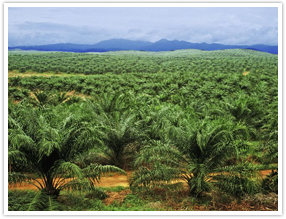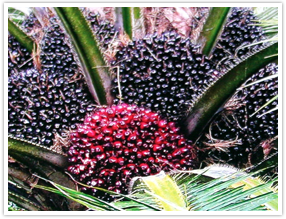| CALL US ON: +91 9900066400 FOR UPDATES AND LATEST NEWS |
|
|
Oil Palm
 Palm oil is the second largest edible oil in the world with an annual production of over 15 million tonnes. Large scale estates are developed in South-East Asia (Malaysia and Indonesia), West Africa and Latin America. Currently, palm oil is cultivated in India in a few states including Karnataka, Kerala, Tamilnadu and Maharashtra, and major quantities are imported from other countries. Oil palm requires an evenly distributed annual rainfall of 2,000 mm without a defined dry season. Better yields are obtained in places with the maximum average temperature of 29 to 33 degree C. Triangular system of planting with 9x9x9 m spacing for 143 palms/ha is being recommended. Continuous soil moisture availability by irrigation encourages vigorous growth and better yield.
Palm oil is the second largest edible oil in the world with an annual production of over 15 million tonnes. Large scale estates are developed in South-East Asia (Malaysia and Indonesia), West Africa and Latin America. Currently, palm oil is cultivated in India in a few states including Karnataka, Kerala, Tamilnadu and Maharashtra, and major quantities are imported from other countries. Oil palm requires an evenly distributed annual rainfall of 2,000 mm without a defined dry season. Better yields are obtained in places with the maximum average temperature of 29 to 33 degree C. Triangular system of planting with 9x9x9 m spacing for 143 palms/ha is being recommended. Continuous soil moisture availability by irrigation encourages vigorous growth and better yield.
 Bunches are farmed from third year onwards while flowers are pollinated by wind and insects. Bunches usually ripen in six months after anthesis, and they should be harvested in an interval of 7 to 14 days. Sterilised bunches are stripped in a rotary drum stripper to separate the fruits from the bunches. Fruits are converted to semisolid pulp and separated into oil and water. High speed centrifuge is used to remove final solid impurities from the oil; moisture content of the oil is also removed before the red palm oil is produced. Yields start from the fourth year with 4 tonnes, which will increase up to 30 tonnes per year until 25 years. Palm oil is the source of edible oil and many industrial products in India.
Bunches are farmed from third year onwards while flowers are pollinated by wind and insects. Bunches usually ripen in six months after anthesis, and they should be harvested in an interval of 7 to 14 days. Sterilised bunches are stripped in a rotary drum stripper to separate the fruits from the bunches. Fruits are converted to semisolid pulp and separated into oil and water. High speed centrifuge is used to remove final solid impurities from the oil; moisture content of the oil is also removed before the red palm oil is produced. Yields start from the fourth year with 4 tonnes, which will increase up to 30 tonnes per year until 25 years. Palm oil is the source of edible oil and many industrial products in India.

![]()
All rights reserved © | Privacy policy








